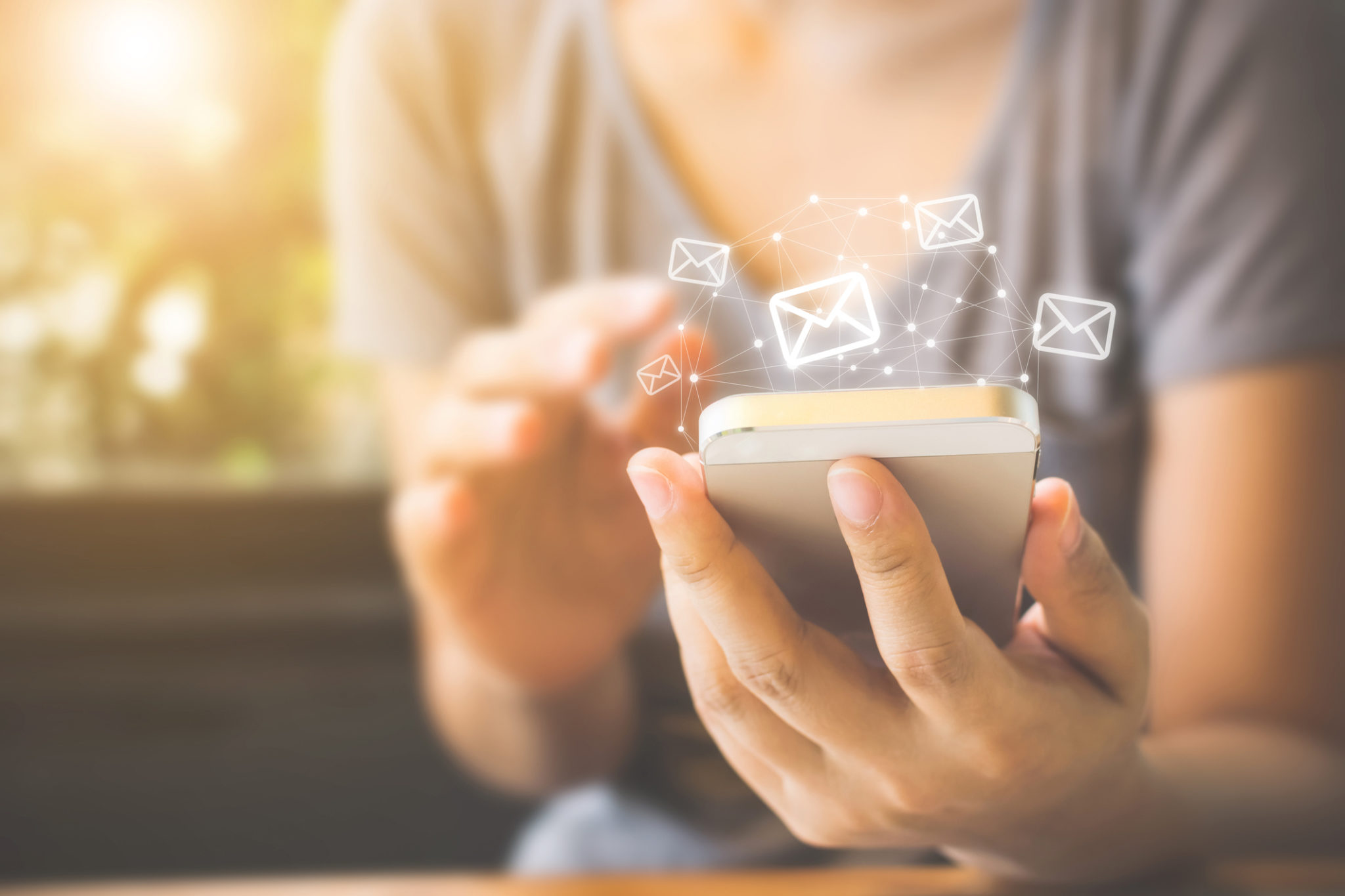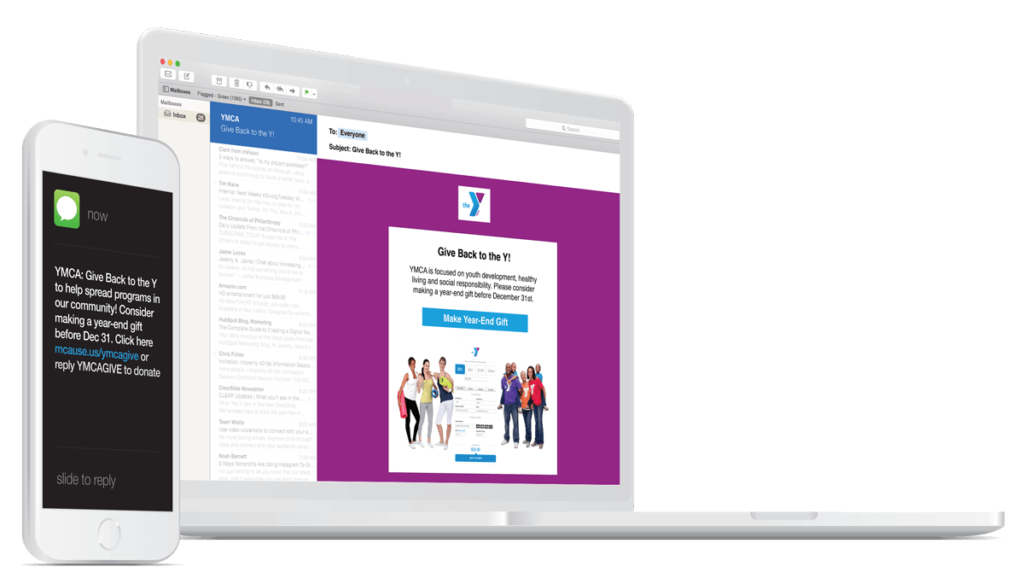Feb 2, 2022
Email Marketing For Nonprofits

Despite the rise in social media and text message communications, many supporters still check e-mail for updates from the organizations they care about. Phones make it easy for donors to connect with your cause and mobile-friendly e-mails are a great way to reach supporters who may be checking their inboxes on a mobile device.
It’s estimated that two in three emails are opened via mobile devices, so you want to be sure your organization is ready to easily collect donations from e-mail.
Videos, pictures, and stories that are cross-promoted, or posted across e-mail, social media, and text messages, yield the highest response rates because they reach the largest percentage of donors.
Nonprofit Email Marketing Best Practices
People are much more likely to improve your online giving, read your content, click your links, and follow through on your calls-to-action if your email is mobile-friendly.
Mobile-friendly emails contain text, headers, buttons, and images that automatically resize when an individual views the e-mail on a mobile device.
Many e-mail marketing services like MailChimp & Constant Contact provide easy drag-and-drop editors that enable you to create both online and mobile-friendly versions of your e-mails.
Email Design Best Practice:
Keep in mind that people tend to look at images, skim the first few sentences, and click a link if your call-to-action is compelling, so keep your content short and to the point!
Important Email Marketing Stats:
- Three in four marketers have seen an increase in e-mail engagement over the past year
- ROI for email marketing is approximately $36 for every $1 spent
- The average bounce rate across industries is just under 10%
- One in three marketers send weekly emails and one in four marketers send emails multiple times per month
- Nearly one in two people will open an e-mail based on the subject line alone.
Send Emails That Drive an Emotional Response
If you want to emotionally connect with supporters through their inboxes, you’ll need to do more than make your messages mobile-friendly. Donors tend to be more interested in feeling than by facts or figures, and emotions drive supporters to act.
Why does this matter?
E-mails are more personal than website copy and scalable to audiences of all sizes, according to nonprofit consultant Vanessa Chase.
Need Help Creating Emails That Convert?
Check out this nonprofit e-mail marketing guide put together by Hubspot of 12 Nonprofit Marketing Emails That Actually Convert. Use these examples to increase your e-mail click-through rate and your brand awareness.
Use Emails to Tell Your Story
Capturing readership for your cause means delivering compelling content, and the best way to do that is to replace your “newsletters” with personal, meaningful stories. Firsthand narratives and pictures provide concrete representations of the charitable work your cause is doing to make a difference in the world.
The most immediate—and authentic—type of story is that of a person who has been helped by your organization.
These are narratives you should collect straight from the source, as nothing is more impactful than firsthand experience. Ask beneficiaries of your cause to write their experience in their own words or, if you deal with non-human beneficiaries, compile photographs or videos that show what was done and how it helped. Don’t be afraid to appeal to the heart!
Use Email to Showcase Your Donors
Be prepared to do a little searching before you find stories so you can send e-mails that resonate. Don’t force the narrative—if you do this, the writing will appear disingenuous and is more likely to disconnect the readers from your cause.
You don’t need to focus only on those who received help from your organization. Volunteer and donor profiles also count as compelling stories.
Using a stellar example of how a benefactor helped make a good cause possible can inspire others to follow suit.
Furthermore, recognition can motivate first-time philanthropists to give online to your cause, so don’t shy away from thanking donors immediately and thoroughly—you can even tag them in your social media posts thanking them for their generosity.
Emails Must Be Simple or They Won’t Be Read

One of the most important nonprofit e-mail marketing best practices is to keep your message simple. One call-to-action is best!
Readers can’t connect to muddled words and long paragraphs, no matter how compelling the shared story is. If you stick to short sentences and keep your paragraphs tidy, you’ll keep your audience scrolling down the page.
You can also break up sections of text with an image or two. Visuals are intuitive and create a shared connection with the reader. Visuals also help anchor your story so you don’t stray from the main point.
Speaking of anchors, e-mails are a great way to drive supporters to your website or online donation landing page to read more. Instead of including a whole narrative in the body of an e-mail, tell just the beginning before providing an external link to the rest of the tale.
And don’t forget:
Nearly half of e-mail recipients open e-mails based on the subject line alone. An effective nonprofit e-mail marketing best practice is to spend as much time working on your subject line as you do designing your entire e-mail.
Quick Nonprofit E-mail Marketing Tips
- Make sure that you always have at least one image near the top of the e-mail so that you can engage readers before they have to scroll.
- For the highest click-through rates be sure to link a line of text (top), your image (middle), and a button (bottom) to the URL you want people to visit. If you are asking for a donation be sure that your link, button, or image goes to a mobile-friendly online donation page
- A/B test e-mail subject lines to 10% of your list and use the top performer for the remaining 90%. Most e-mail marketing providers make this step easy.
E-mail marketing is a great way for nonprofits to affordably reach a wider audience. It’s quicker than direct mail and can enable faster responses and lead to recipients taking more action for your cause.
However, e-mail is tricky to get right, and many messages get marked as spam. As more organizations and consumer brands use email marketing, it’s harder to stand out. Citing data from a recent eNonprofit Benchmark study, Hubspot reported that organizations are losing e-mail subscribers more quickly than they can grow their lists. The results revealed when organizations grow their lists by 15 percent, 16 percent of subscribers leave.
HTML e-mail blasts can take hours to compose, design, code, test and send. Approximately one in four of your donors read your e-mails.
So what does this all mean? Tell your story and make the read worthwhile, and never spam your lists.
Be sure to follow this e-mail marketing guide and test your e-mails and see what is working and what isn’t. That way you don’t waste precious time on something that isn’t effective. Looking for a fundraising and donor management partnership that best supports your marketing efforts? Talk to our GiveSmart experts today!
Related



